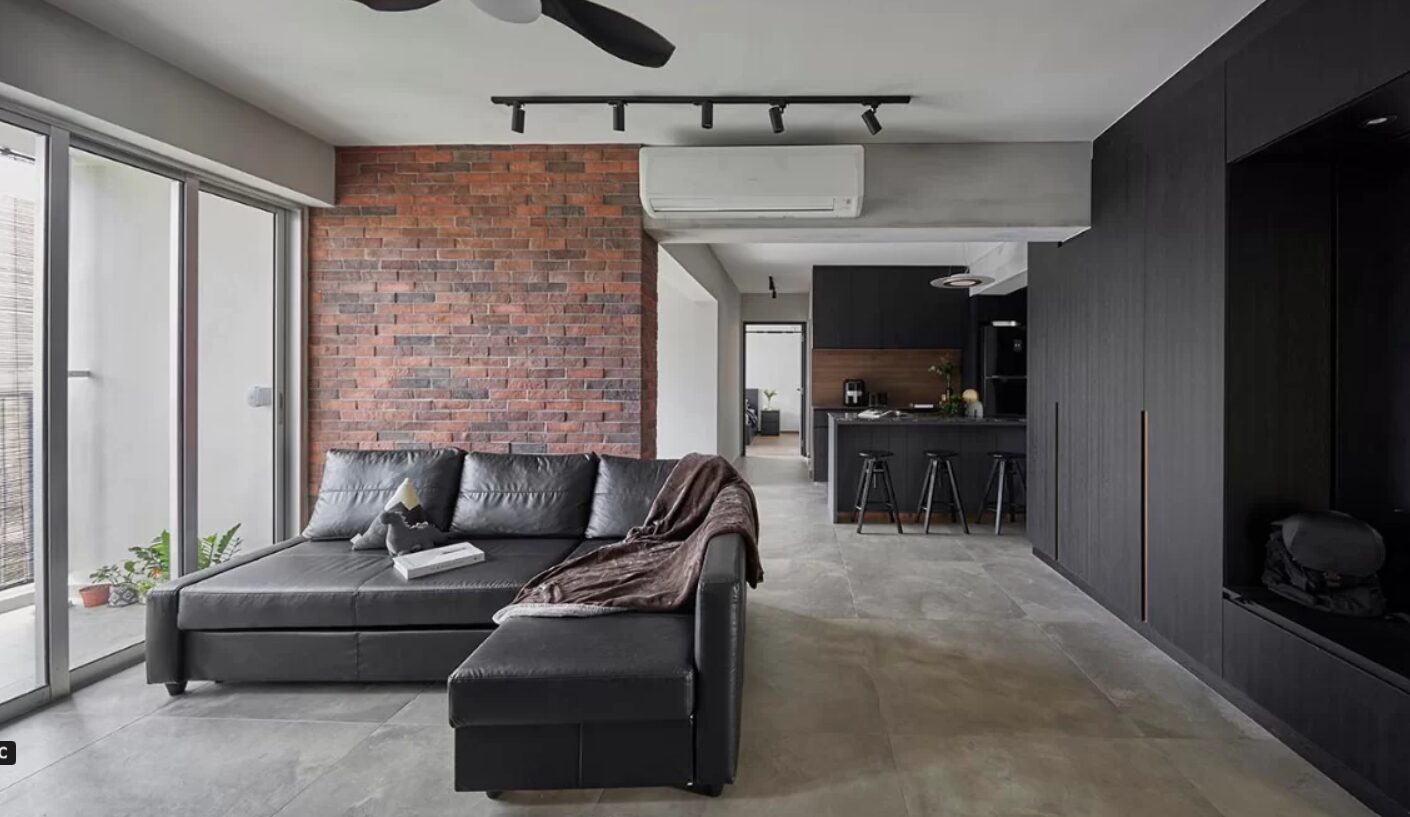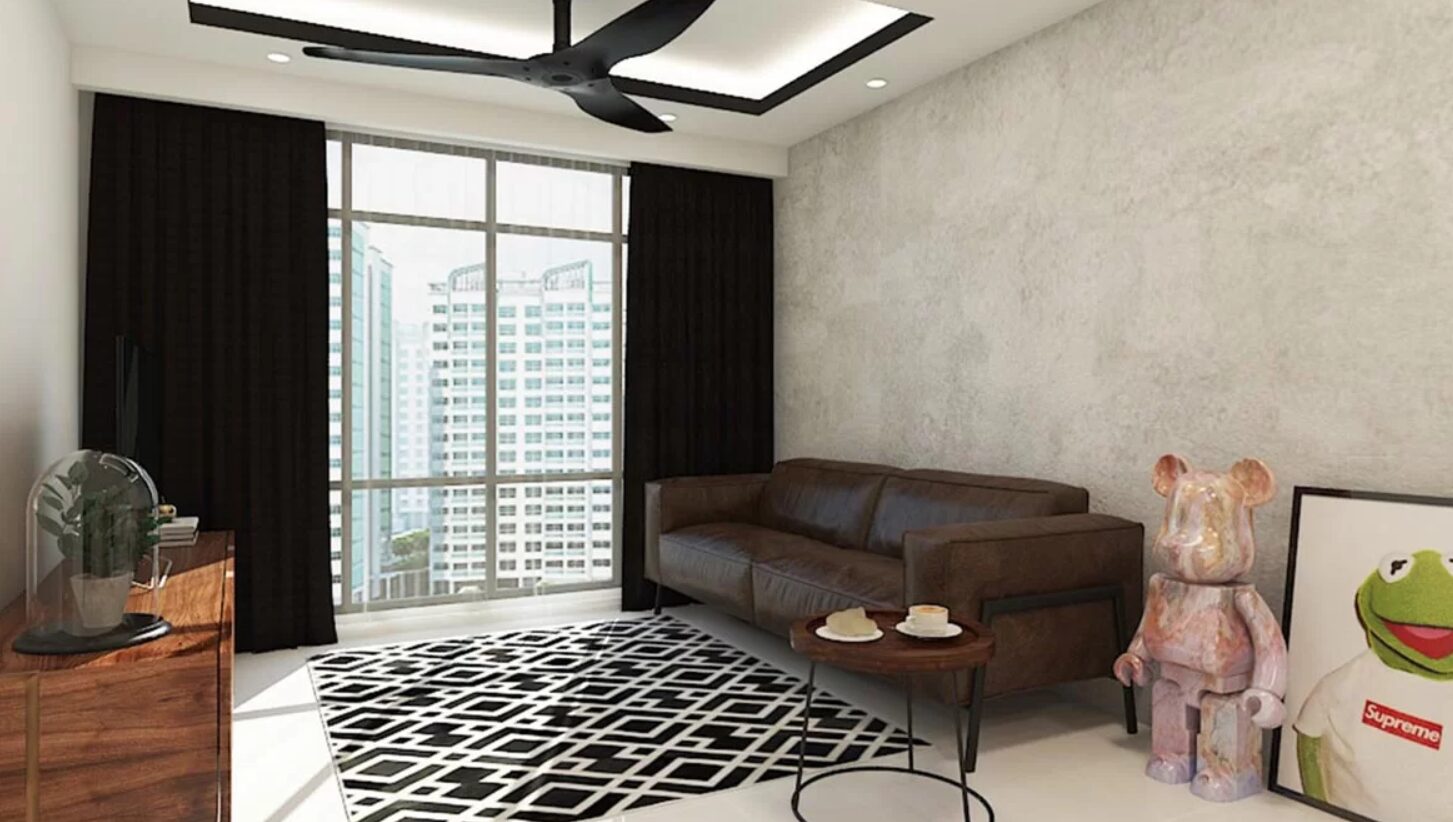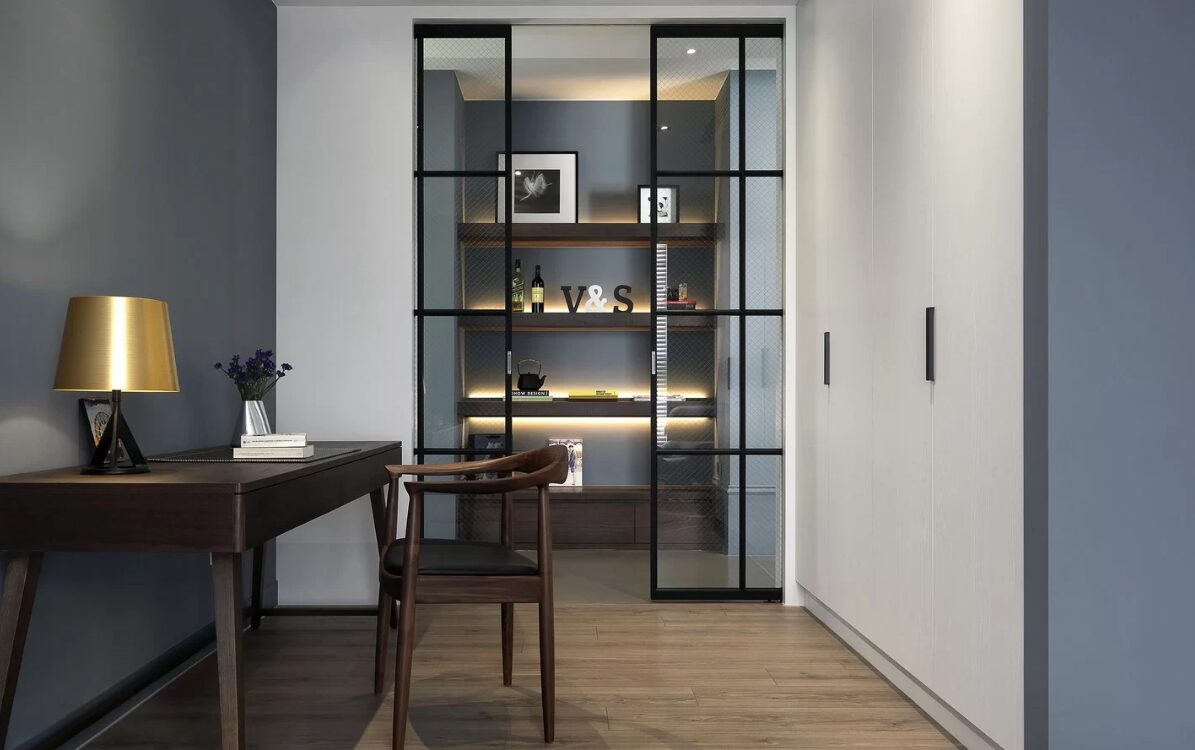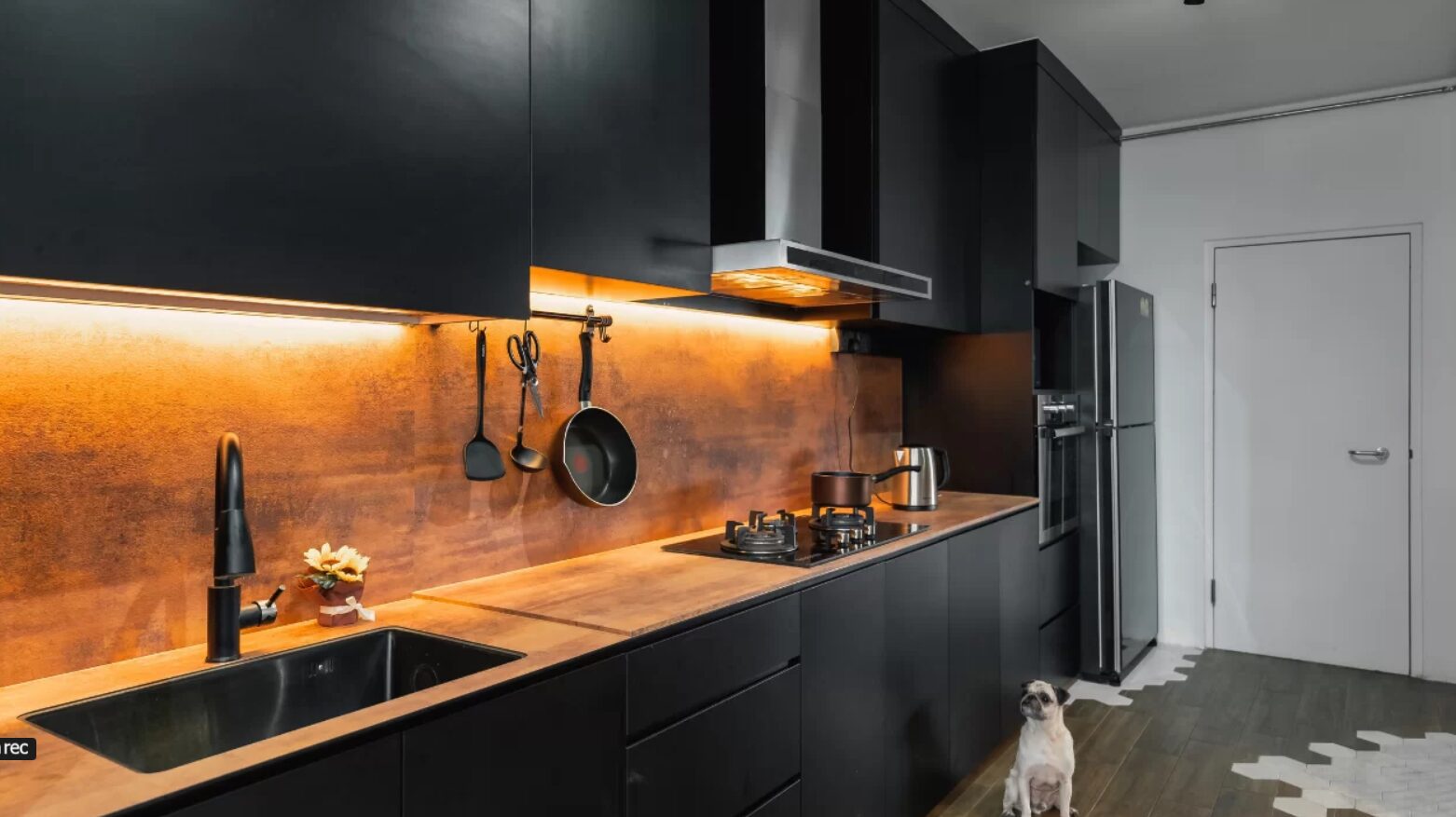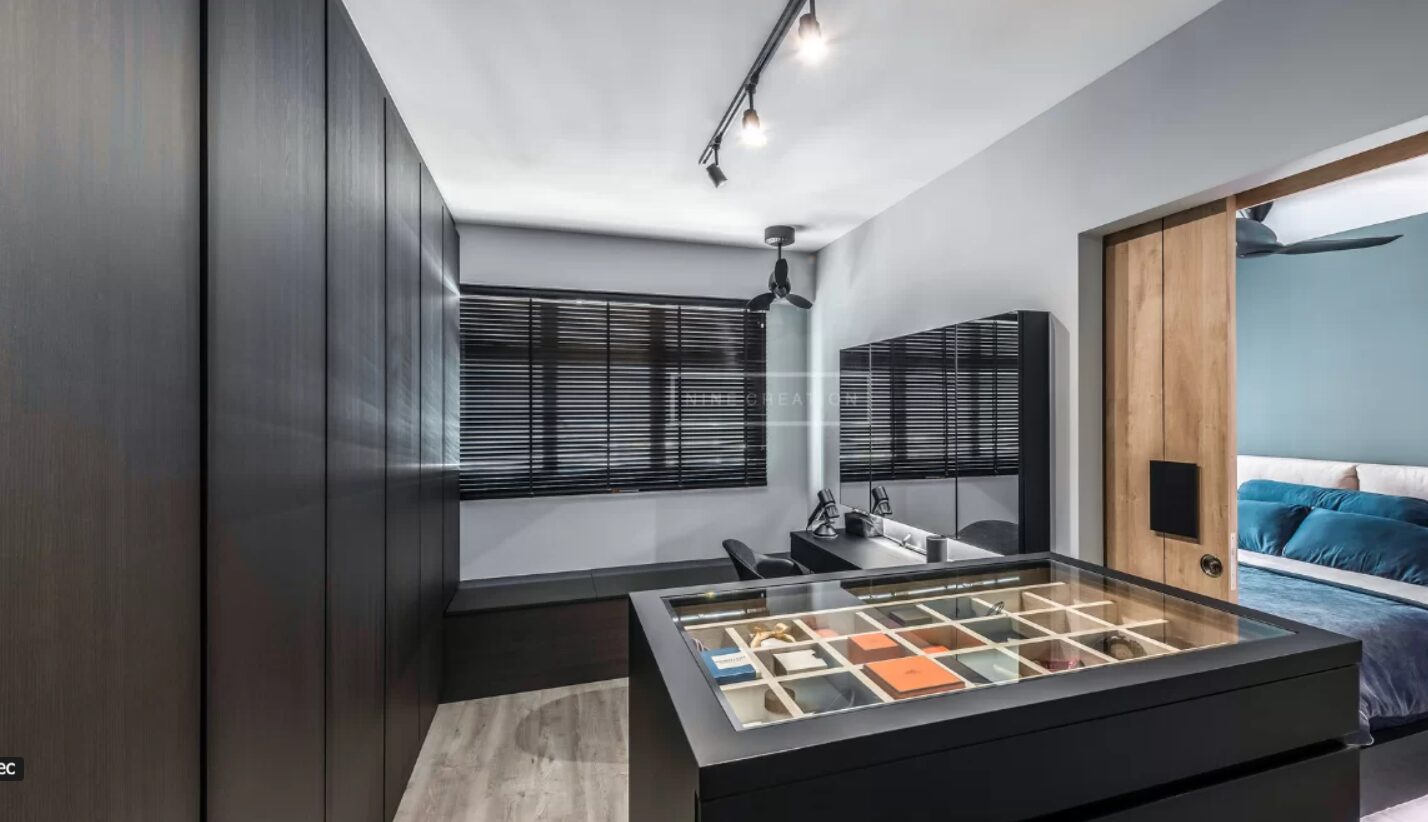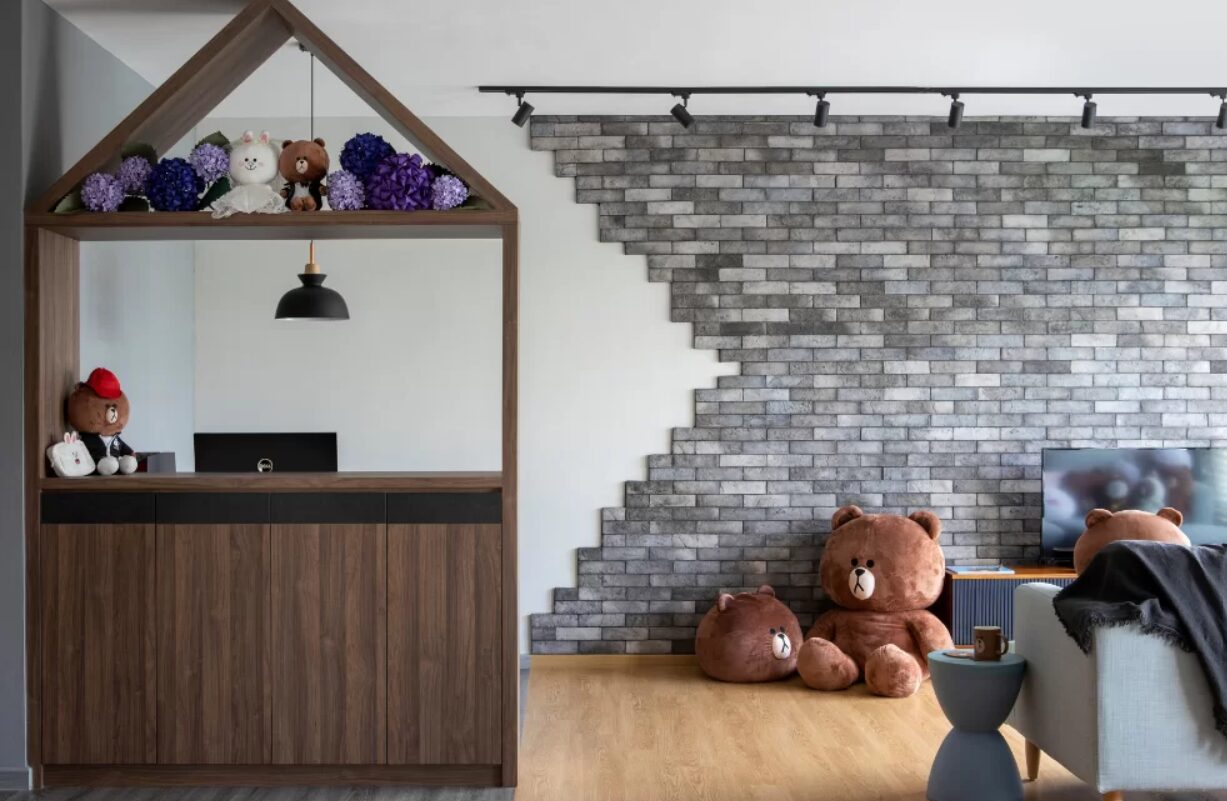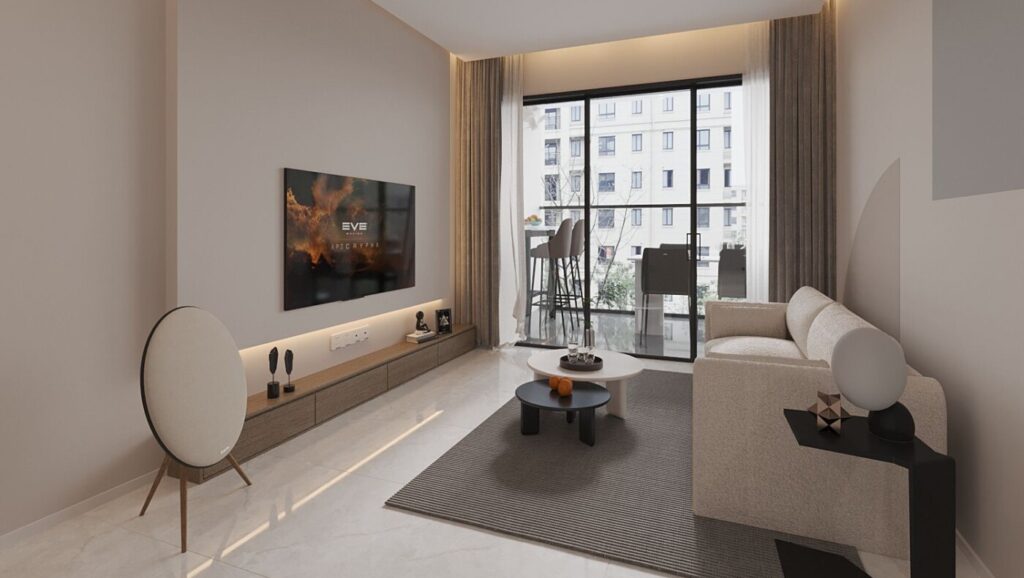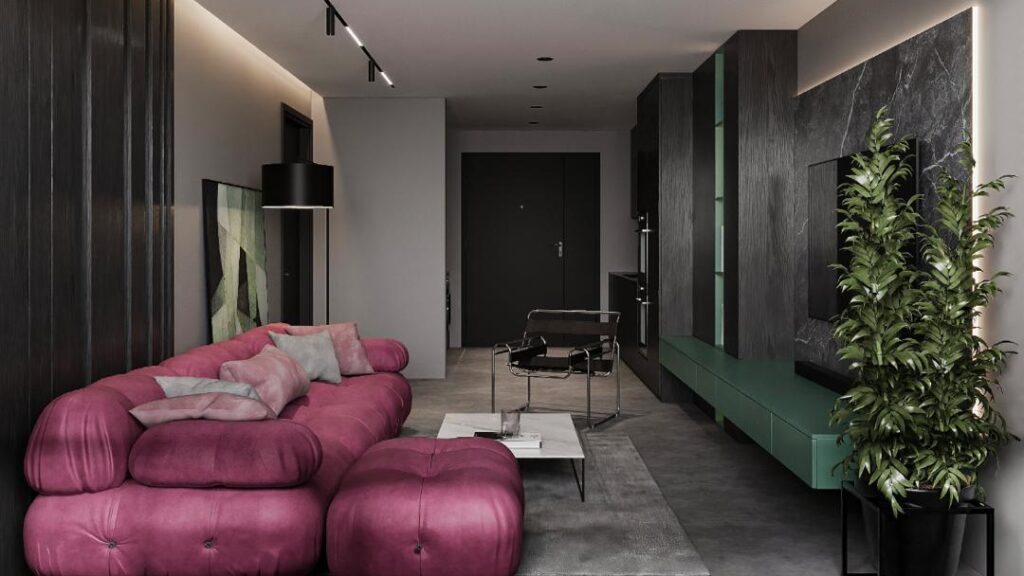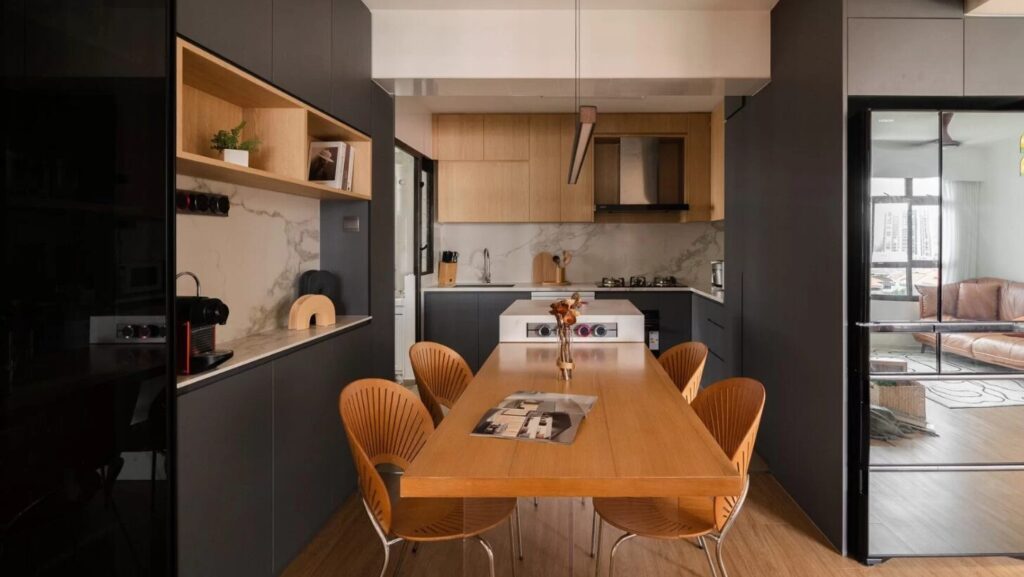10 Key Elements Of Industrial Interior Design
| Topic | Details |
| Climate-Smart Colours | Emphasises light greys, whites, and strategically placed darker tones to reflect heat and maintain cooling properties while accentuating industrial appeal. |
| Space Optimisation | Incorporates multi-functional furniture and see-through metal dividers to maximise efficiency in compact living environments. |
| Humidity-Resistant Metals | Uses powder-coated metals and marine-grade stainless steel to prevent rust, emphasising lighting solutions for ventilation while maintaining industrial style. |
| HDB Compliance | Utilises feature walls, textured wallpapers, and HDB-approved materials to mimic industrial elements while adhering to regulations. |
| Material Selection | Focuses on moisture-resistant wood, treated metal furniture, and laminate flooring to tackle humidity challenges, ensuring durability and beauty. |
| Flooring Choices | Homogeneous tiles, anti-slip matte finishes, and wood-look vinyl provide industrial aesthetics with practicality; epoxy for condominium options. |
| Vintage Integration | Incorporates local elements such as kopitiam furniture to add Singaporean heritage to the industrial design, emphasising custom pieces with local culture. |
| Ventilation Considerations | Strategic window and door placements to maximise airflow with industrial-style fans and dehumidifiers, ensuring design integrity and comfort. |
| Space Planning | Emphasises creating multi-functional areas using industrial furniture and vertical space strategies to enhance aesthetics while optimising space. |
| Maintenance | Regular inspection and treatment of metal and wood elements augment the longevity and attractiveness of industrial design under Singapore’s climate conditions. |
Industrial interior design has undergone a remarkable transformation in Singapore’s residential landscape, particularly within HDB flats and condominiums. While this design movement originated from converted warehouses and factories in Western countries, Singapore has skillfully adapted it to suit our unique environment. The style has evolved to address our tropical climate, space constraints, and strict building regulations, creating a distinctive Singaporean interpretation that balances aesthetic appeal with practical functionality.
The charm of industrial design lies in its rugged and raw aesthetics, which initially seem at odds with the polished and streamlined interiors typically desired in Singaporean homes. However, this design trend has a boom in interior design creativity within Singapore. Homeowners and designers alike are exploring unconventional materials and finishes, thereby forging a new path in home aesthetics. Singapore has indeed made industrial design its own, and this evolution hasn’t gone unnoticed. The trend has sparked the interest of young couples and those keen on experimental design, with some opting to incorporate eclectic pieces that complement the industrial framework, thereby mixing styles for surprisingly charming results. In this article, we delve into the Key Elements of Industrial Interior Design in Singapore, exploring a design philosophy that transforms living spaces through innovative adaptation.
Climate-Smart Neutral Colour Palettes
The foundation of Singapore’s industrial design approach lies in its intelligent use of climate-appropriate colours. While industrial design traditionally embraces greys, blacks, and whites, these colors take on additional significance in Singapore’s tropical climate. Light grey screed walls have become a hallmark of this style, not just for their industrial appeal but for their practical ability to reflect heat and light. Organise the space.
White-washed walls serve as an excellent base, with grey accents strategically added to create depth without compromising the space’s cooling properties. This combination cleverly marries form and function, ensuring that spaces remain visually appealing while leveraging natural light. In areas less exposed to sunlight, darker tones can be introduced to create dramatic contrasts, though these are used sparingly to maintain the overall temperature balance of the home.
Moreover, color schemes are an opportunity to infuse personal style into industrial design. The rise of minimalist trends has inspired homeowners to explore the integration of industrial elements in new, exciting ways. By balancing bold industrial features with softer, more subtle hues, homeowners are fashioning interiors that are sophisticated, inviting, and perfectly attuned to Singapore’s climatic conditions.
Practical Flooring Adaptations
Flooring choices in Singapore’s industrial-style homes require particular attention to practicality and maintenance. Homogeneous tiles with concrete effects offer the industrial look while providing superior moisture resistance and easy maintenance.
Anti-slip matte finishes address safety concerns in humid conditions, while wood-look vinyl flooring presents a practical alternative to traditional wood flooring. For condominiums, epoxy flooring offers an additional option, creating seamless surfaces that capture industrial character while offering exceptional durability and ease of maintenance.
Homeowners must consider floor replacements carefully, for certain warning signs indicate an impending need for updates. Residents wondering if it’s time to alter flooring decisions can learn more about flooring warning signs to prevent future inconveniences.
Space-Optimised Design Solutions
Space optimisation represents a crucial adaptation of industrial design to Singapore’s compact living environments. Unlike the vast, open spaces of converted warehouses, Singapore’s version emphasises efficiency without sacrificing style. Multi-functional furniture pieces incorporate industrial elements while serving practical purposes – think storage coffee tables with metal frames or wall-mounted desks that fold away when not in use.
Industrial design in Singapore has also pioneered innovative techniques in space division. See-through metal dividers have revolutionised space division, creating distinct zones while maintaining visual flow and allowing natural light penetration. Instead of obstructing views, these dividers enhance spatial perception, making homes appear larger.
These innovative techniques demonstrate how industrial design can enhance rather than compete with space limitations. For those interested in experimenting with unconventional solutions to small space design, exploring unique approaches to small space design may yield unexpected yet delightful outcomes.
Local Vintage Integration
The incorporation of local vintage elements adds a uniquely Singaporean dimension to industrial design. Repurposed kopitiam furniture brings authentic local character to spaces, while vintage industrial pieces from local markets add historical depth.
Singapore’s furniture makers have embraced this fusion, creating custom pieces that blend industrial aesthetics with local cultural elements. Designing your dream home involves integrating retrofitted furniture with a Singaporean flair ensures homeowners enjoy interiors that are not only functional but also ooze the country’s rich heritage and tradition.
This integration of local heritage with industrial design creates spaces that feel both international and distinctly Singaporean. Including familiar cultural cues within interior design showcases Singapore that isn’t confined to modern interpretations but is steeped in vibrant historical relevant pieces.
Humidity-Resistant Metal Elements
Singapore’s high humidity poses unique challenges for industrial design’s signature metal elements. This has led to innovative approaches in material selection and treatment. Powder-coated metals and marine-grade stainless steel have become standard choices, offering durability against rust and corrosion while maintaining aesthetic appeal.
Modern lighting solutions, such as LED track systems and wall-mounted fixtures, are specifically designed to provide adequate ventilation while showcasing industrial style. These lighting choices illuminate homes while circumventing potential moisture issues, underscoring the importance of marrying design intent with practical considerations.
These adaptations ensure that metal elements remain striking design features rather than maintenance burdens. Homeowners aiming to elevate their living room spaces may discover that industrial lighting offers the right blend of contemporary aesthetics and functional brilliance to enhance their spaces.
Tropical-Friendly Material Selection
The choice of materials in Singapore’s industrial design reflects a deep understanding of tropical climate requirements. Moisture-resistant engineered wood has become a popular choice for furniture and fixtures, offering the warmth of wood without its vulnerability to humidity.
Metal furniture pieces receive specialised treatments to prevent corrosion, while laminate flooring combines wood and metal aesthetics in a humidity-resistant package. Local hardwoods, when used, undergo extensive treatment to ensure longevity.
This careful material selection ensures that industrial-style homes remain beautiful and durable despite challenging climate conditions. With these thoughtful choices, homeowners can explore green living concepts that align with sustainable practices, ensuring both environmental consciousness and outstanding design aesthetics.
HDB-Compliant Industrial Features
Working within HDB regulations requires creative solutions to achieve industrial aesthetics. While exposed pipes and structural elements might be limited, designers have developed ingenious alternatives. Feature walls using HDB-approved materials mimic industrial textures, while carefully-placed copper-coloured conduits add authentic industrial character to lighting systems.
Textured wallpapers and laminates that replicate industrial materials provide another avenue for achieving the desired look without structural modifications. These solutions demonstrate how regulatory compliance can coexist with creative design expression.
The secret lies in innovative design interpretations that prioritise safety and functionality. By acknowledging regulatory compliance, homeowners can achieve the industrial style they desire while adhering to guidelines that ensure the safety and integrity of their homes.
Essential Ventilation Considerations
Proper ventilation becomes crucial in industrial-style Singapore homes. The placement of windows and doors requires careful planning to maximize natural airflow, while industrial-style ceiling fans serve both functional and aesthetic purposes.
The installation of dehumidifiers helps protect metal elements from moisture damage, and air conditioning systems need to be strategically placed to maintain comfort without compromising the industrial aesthetic. These measures contribute to comfortable living environments, ensuring design elements remain visually appealing and long-lasting.
Indeed, climate considerations necessitate innovative approaches for managing indoor conditions. Smart placement strategies can help incorporate smart home technology to achieve an optimal balance that serves functional and aesthetic purposes.
Space Planning Strategies
Effective space planning remains essential in Singapore’s compact homes. Industrial design elements need to complement rather than overwhelm living spaces. This often involves creating multi-functional areas through clever furniture placement and the use of vertical space.
Industrial-style shelving systems can maximise storage while contributing to the overall aesthetic, while fold-down furniture pieces offer flexibility in space usage. These space-saving strategies demonstrate how industrial design can be both an art form and a practical solution to space constraints.
Caretaking of specific environmental conditions while acknowledging lifestyle needs ensures space is maximised without compromising the desired industrial appeal. For those eager to improve layouts and utilise every nook and cranny, these practical design tips offer creative ways to make design and space optimisation work hand-in-hand.
Maintenance Requirements
Regular maintenance becomes crucial for preserving industrial-style elements in Singapore’s climate. Metal surfaces require periodic inspection and treatment to prevent rust and corrosion, while wood elements need protection against moisture damage.
The implementation of proper cleaning routines and preventive maintenance schedules ensures that renovation work can grow the value of your home, and that industrial design features remain attractive and functional over time. By understanding material longevity and care, homeowners protect their home’s value and have peace of mind knowing that regular upkeep enhances aesthetic longevity.
Creating a maintenance checklist assists in adhering to schedules and understanding necessary care. Focused maintenance practices can significantly prolong the life of industrial features and maintain the design’s charm over time.
The success of industrial design in Singapore homes lies in thoughtful adaptation rather than strict replication of Western industrial aesthetics. By considering our unique climate, space constraints, and regulatory requirements, homeowners can create stunning industrial-style spaces that remain practical and comfortable.
This approach to industrial design demonstrates Singapore’s ability to adapt global design trends to local conditions while creating something uniquely our own. With the combination of design ingenuity, situational awareness, and regulatory adherence, industrial design in Singapore represents a harmonious fusion that embodies function, heritage, and international appeal.
FAQ
1.What makes industrial design suitable for Singapore’s climate?
The suitability comes from adapting industrial elements, such as light grey screed and carefully chosen materials, that reflect heat and prevent humidity damage while maintaining aesthetic appeal.
2. How can industrial design be applied in compact HDB spaces?
Through multi-functional furniture and see-through dividers that maintain visual flow, allowing space maximisation while incorporating industrial aesthetics.
3. How do Singaporean designers comply with HDB regulations while achieving industrial aesthetics?
By using HDB-approved materials, such as feature walls and textured wallpapers, that mimic industrial textures while complying with building guidelines.
4. What materials are best for industrial-style homes in Singapore?
Moisture-resistant engineered woods, treated metals, and laminate flooring are ideal for withstanding Singapore’s humid climate while achieving the desired industrial look.
5. Are there specific maintenance routines for industrial design elements in Singapore?
Yes, regular inspection and treatment of metal and wood for rust and moisture damage help preserve industrial features’ functionality and appeal
Are you looking to upgrade your home? Look no further! Drop us an enquiry at media@redbrick.sg and let us help you transform your home into a smart and efficient living space. Our experts are here to assist you in finding the perfect smart home devices to suit your needs and enhance your lifestyle.
Designing your dream home can be an exciting journey, but it can also be overwhelming. With so many options and styles available, it can be challenging to decide what is best for you and your family. However, by considering factors such as functionality, color palette, furniture, materials, and personal style, you can create a space that is not only beautiful but also practical and comfortable.
When it comes to achieving a successful interior design project, choosing a provider with a rock-solid reputation and exceptional skills is paramount. At Redbrick Homes, we understand that inspiration is key. That’s why our top-quality interior design partners are ready to wow you with beautiful, personalized spaces brimming with exceptional Singaporean ideas.
Remember to take your time, do your research, and work with a professional if needed. With the right interior design choices, you can transform your house into a dream home that you’ll enjoy for years to come.


